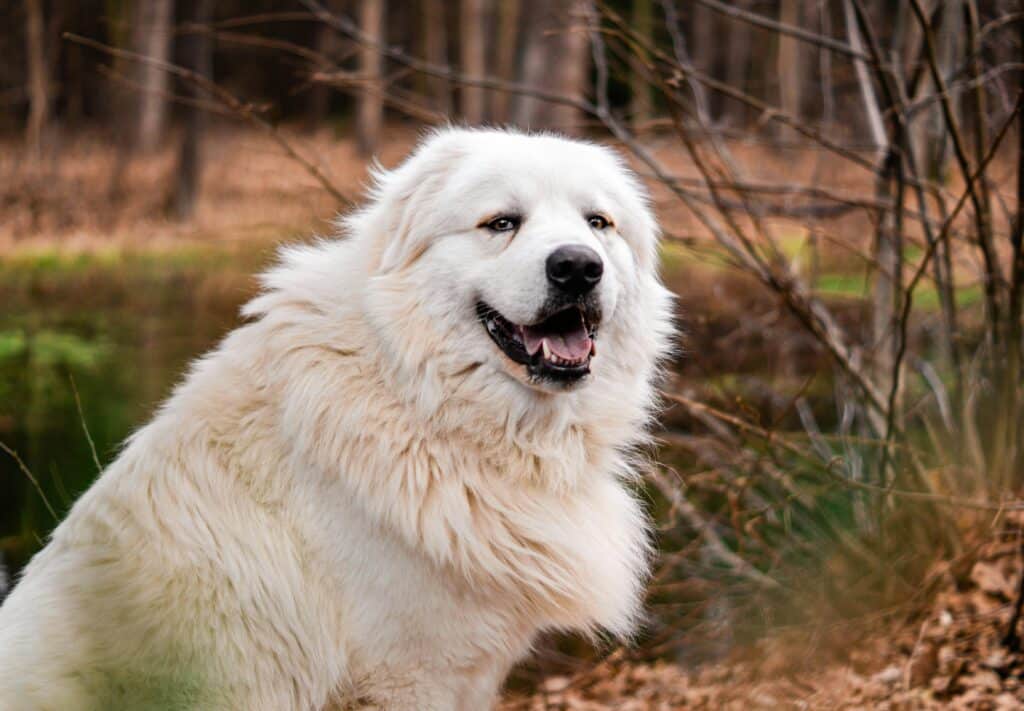The gentle nature and stately appearance of the Great Pyrenees perfectly capture the essence of what it means to be friends with a dog. Originating in the rough regions of the Pyrenees Mountains dividing France from Spain, this breed has long been valued for its loyalty, intelligence, and unwavering guardianship. It is endowed with double dewclaws among other features that make it strong and able-bodied.
A Glimpse into the Great Pyrenees Breed
Great Pyrenees are known for being heavy-set with massive bodies covered by thick undercoats that helps them to survive in harsh mountain climates. They were traditionally used to protect herds of sheep or other domestic animals which shows their inherent instincts in safeguarding their charges.
The Significance of the Double Dewclaw
One primary physical characteristic of Great Pyrenees is double dewclaws on their hind legs. These vestigial thumbs have functionality; they provide extra support as well as stability especially for difficult places like rocky slopes along the Pyrenees. The double dewclaws are particularly representative of this breed’s toughness and adaptability.
Unraveling the Historical Background
The Great Pyrenees breed originated in ancient times, with archaeological evidence suggesting that mastiff-type dogs migrated to Europe from Asia Minor around 1800-1000 B.C. These dogs were eventually bred into the impressive and fearless protectors identified as Great Pyrenees which are greatly known for their unyielding protection of livestock from predators.
Early Mentions of the Double Dewclaw
Ever since they have made an appearance in historical records, double dewclaws in Great Pyrenees have been cherished for their efficiency. Their presence was a must according to standard, because these dewclaws with stability and grip helped them cross through dangerous mountain areas ensuring safety both for themselves and for the flocks they were ruling over.
Evolution of Breed Standards
Throughout its evolution as a breed, having double dewclaws has remained one of the characteristics that set it apart. Not having these dewclaws constitutes a fault under this standard suggesting how deeply rooted this breed is to its mountainous heritage. For many centuries now, physical attributes such as those represented by double dew claws have been selectively bred to perfect condition among these flock guardians.
What we should know about Practical Implications and Care Guidelines
Maintaining the double dewclaws in their proper conditions is crucial to the well-being of Great Pyrenees puppies. This refers to regular trimming that keeps the nails at a reasonable length, thus preventing pain and possible injury. Moreover, careful monitoring helps identify any signs of damage or infection hence quick response.
Areas that Need Attention for better Understanding
It is however worth noting that despite being tough, some dogs might have problems such as deformities or physical injuries. Keeping an eye on them and taking proactive steps including regular visits to a grooming professional and vet can help minimize these dangers. They also help maintain usefulness of the dew claws.
What should be observed when Grooming?
A good grooming routine including regular cutting of hair around double dews together with frequent checking ensures they are always healthy and functioning properly. Owners can then ensure that their Great Pyrenees stay safe even on extreme terrains by maintaining these services as part of their normal practices.
Controversies and Debates Surrounding Dewclaw Management
In this case, removal of dewclaw in dogs particularly those belonging to breed such as Great Pyrenees is not a straight forward issue. While some argue for the preservation of dewclaws as essential anatomical features, others advocate for their removal to mitigate the risk of injury or comply with breed standards. Ethical considerations and breed-specific requirements further complicate the discourse, prompting ongoing discussions within the canine community.
Ethical Considerations and Show Requirements
The decision to remove dewclaws is influenced by a myriad of factors, including ethical considerations, breed standards, and show requirements. While some breeds, like the Great Pyrenees, emphasize the importance of double dewclaws as functional traits, others may prioritize adherence to show standards or breed-specific traditions. Navigating these considerations requires careful deliberation and a nuanced understanding of each breed’s unique characteristics and requirements.
The Cultural Significance of the Double Dewclaw
Beyond their functional utility, the double dewclaws in Great Pyrenees hold symbolic significance rooted in their historical and cultural associations. Revered as a mark of nobility, protection, and good fortune, these dewclaws embody the breed’s ancient lineage and its enduring legacy as guardians of the flock. They have been revered as representations of tenacity, fortitude, and unshakable loyalty in many cultures.
Effect on the Perception of Breeds
The presence of double dewclaws have not only shaped the Great Pyrenees’ physical attributes but also influenced how people view it. It is no wonder that these dogs are admired for their majestic looks and formidable stature as they epitomize strength and elegance. As much as these double-dewclaws are still a visible mark of this breed’s heritage, they are also seen as an indication of great character which has survived for generations.
Conclusion
In conclusion, The Great Pyrenees breed itself in conjunction with the importance attached to double dew claw represents a harmonious mix between purposeful function, symbolism and cultural heritage. These majestic animals represent the ageless bond between human beings and animals as guardians over the flock, companions, friends and pets. We pay homage to its rich history by accepting its peculiar attributes which define this particular type of dog hence making it a part of our everyday lives.
With each Great Pyrenees bearing the hallmark of its double dewclaws, we are reminded of the breed’s resilience, adaptability, and unwavering commitment to its ancestral role as protector and guardian. In cherishing and nurturing these extraordinary creatures may we grasp the deep meaning behind having double dew claws whose preservation ensures that future generations can identify themselves with being true representatives of what a Good Pyrenean Mountain Dog is.

